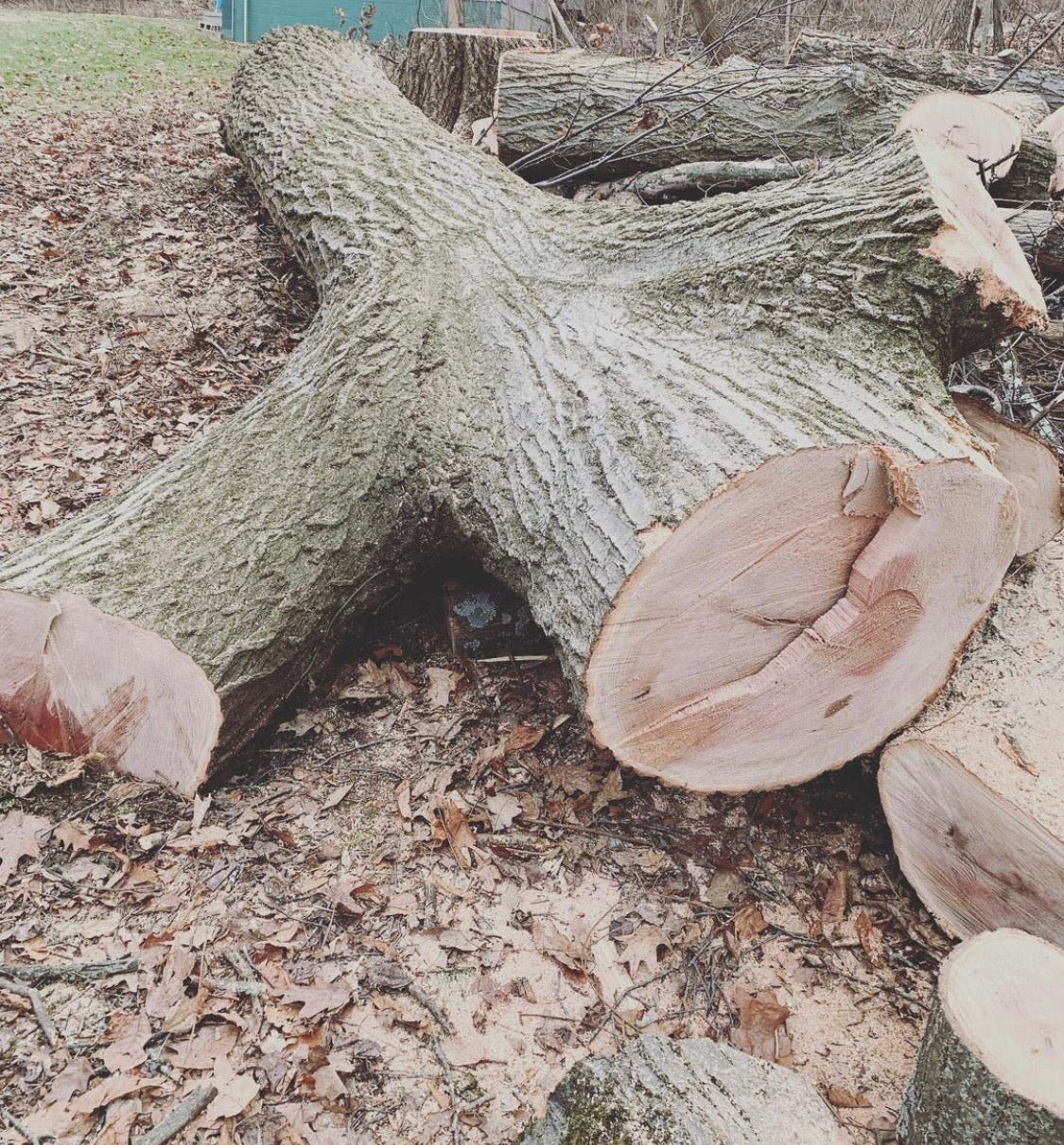The canopy was massive, with its sprawling branches resembling crooked fingers, strained from their decades-long effort to reach the sun against the heavy hand of time. The wind had its way with her, the woodpeckers pecked those hard to reach crevices, all while the squirrels lept wildly from limb to limb like trapeze artists without a net. I stood for a period of time within arms reach of the trunk, staring up and studying the specimen until the back of my neck reminded me it was time to bring my chin down to earth. This giant of a black oak tree was on the arborist’s schedule, so with a resume that went from acorn to 90 ft tall in the span of 157 years, it would soon stand no more. The top of the canopy began to show symptoms of oak wilt just the summer prior and within the past year had lost leaf growth over one third of the upper branches. These hills have lost many in recent years and it is conceivable that over the next decade or two, many of the red oak species in our neck of the woods may go the way of the storied American Chestnut. A revered, rooted backbone of the hardwood forest, fallen victim to the evolution of a fungus spreading through the very water and soil so crucial for the survival of its kind.
I was called in, as is often the case in these parts, to buck the trunk logs and larger upper limbs and haul them out to the mill. The base diameter measured 48 inches, and 16 feet up from that point was a crotch containing the first two side branches that were 2 feet in diameter respectively. Six to seven tons of hardwood, still wrapped in its bark resting on the rich frosty soil that it contributed so much to over the years only now to find itself cut off from its foundation. There are elements of this process that mirror those of the undertaker.
This tree could have been identified by any name other than black oak (sometimes also referred to as yellow oak). But that would not change the truths bestowed upon it by the natural order. The built-in arrangement that belongs to it inherently, and that develops accordingly to the very nature it possesses. It is a hardwood, it produces acorns, has leaves that grow green from spring to summer, and then shed brown in late fall. The sapwood in the upper limbs is yellow and the heartwood has a pink hue throughout that could pass for smoked country ham. These are truths. Undeniable in nature. I am guided by these truths while determining the process for meticulously salvaging each section of the tree in the effort to preserve the traditional utilities of the oak for the generations yet to come. The small branches and leaves will be left on the forest floor, providing wildlife with shelter, food source and organic material decomposing to replenish the soil. The small to medium upper limbs will be processed into firewood and seasoned for heating fuel. The pith of the tree is cracked badly from the base to the crotch, so we will mill an 8 inch x 8 inch cant from the center that will serve as a stout support post for an upcoming barn restoration project. The lumber realized from around the cant will be milled, dried, and surfaced for flooring and cabinetry applications. To throw the whole of this to the wood chipper would be to cast aside the beneficial uses that could be realized perhaps for the next 157 years. Preserving tradition requires continued thoughtful effort and purposeful work in the face of the wood chipper.
In the mid-1800’s this mighty oak was a mere acorn growing on a limb under a canopy of green leaves. It could have been called by any other name, but even then, it already possessed the truths of the natural order.
“By and large, language is a tool for concealing the truth.” - George Carlin




